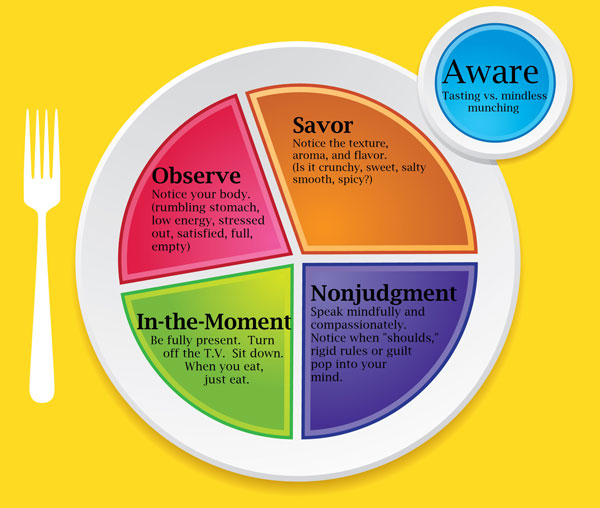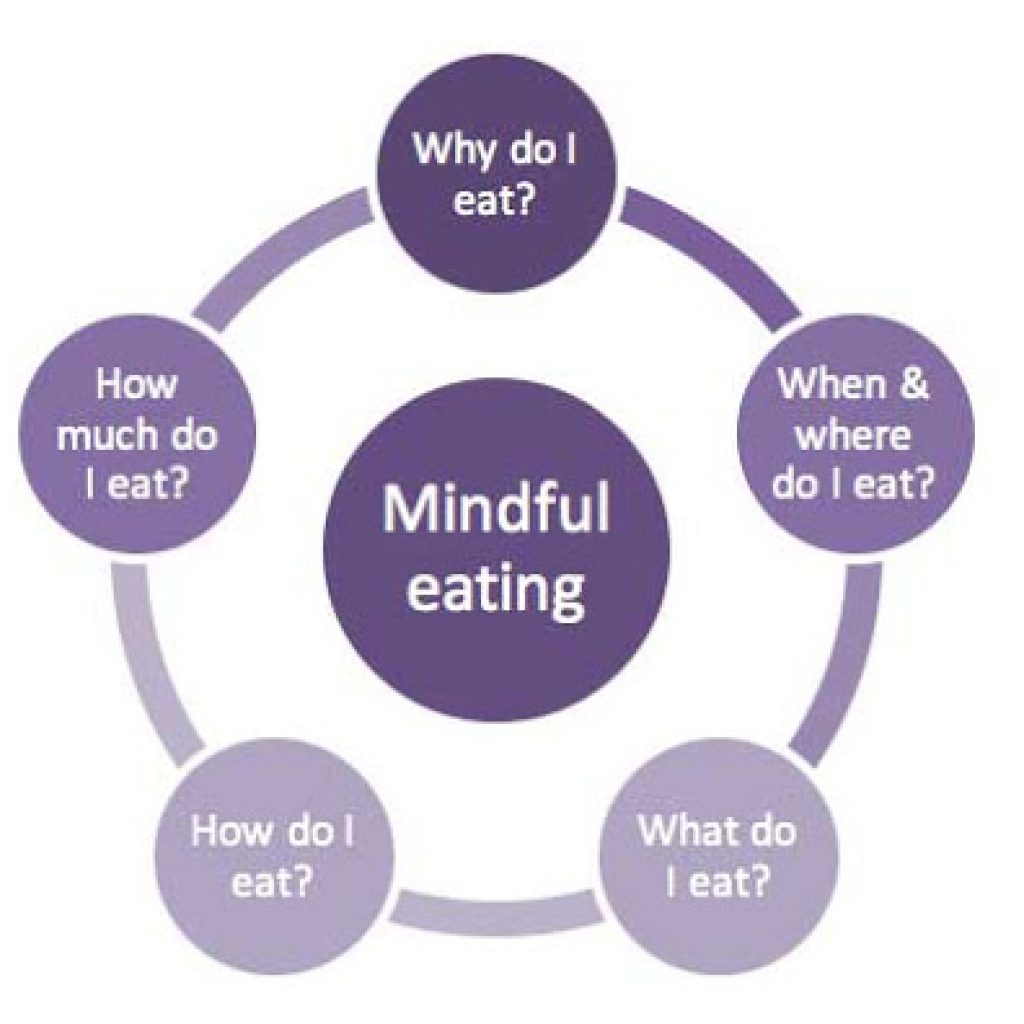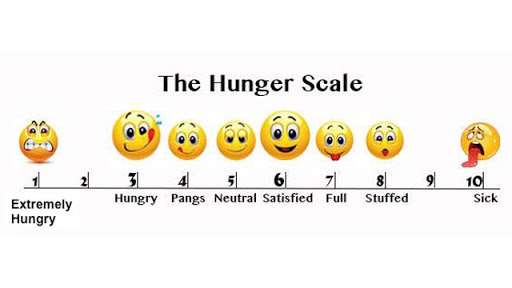
Mindful Eating
Diets range widely from unpronounceable and often unaffordable superfoods to crazy, unsustainable cleanses. All the talk surrounding good food versus bad food has left little room in the conversation for eating behavior. Yet this is the biggest issue and barrier to many people obtaining a healthy lifestyle.
Regardless of what you eat, ask yourself for a minute how you eat. Do you eat on the go? In front of a screen? Do you consistently devour your food quickly? At one point or another, we’ve all gobbled food down from the drive-thru or shoveled popcorn into our mouths at the movies. But the mindful eating movement counters this hustling-bustling food culture and asks us to slow down during meals.
Ultimately, the goal of mindful eating is to base meals on physical cues like hunger signals, not emotional cues like stress or comfort. Physical hunger comes on gradually and can be satisfied by most foods. A person who is physically hungry can stop when they’re full and doesn’t have feelings of guilt or shame after. In contrast, emotional hunger comes on quickly and usually for a specific type of comfort food. This individual tends to eat quickly and alone.
To distinguish between the two, ask yourself these questions: Why do I eat? When do I eat? What do I eat? How do I eat? How much do I eat? Where do I eat?

Begin instilling mindfulness practices by listening to your body. Are you truly hungry? Remember, mealtimes are arbitrary, and your body will tell you when it’s hungry. Get in the habit of asking yourself where your hunger falls on the scale below.

If you struggle slowing down, eat with your nondominant hand or set a timer for at least 20 minutes for your meal. Be sure to take small bites and chew slowly. Turn off the TV or whatever is distracting you. By turning your full attention to the meal, you come to appreciate the sensory experience of your meal. Taste your food. Notice the aroma and texture. Appreciate the flavor profile.
There are numerous benefits to mindful eating including better digestion and nutrient absorption. Slowing down during meals and really focusing on how and why you’re eating reduces overeating and binge eating, helps manage weight, copes with chronic eating problems and reduces anxiety about food and body image.
Europeans are notorious for dining for hours with friends and family. So, take a page out of their book and reclaim eating as an experience; dim the lights, light a candle, listen to music, and enjoy with a friend. Whether you’re alone or in a less than ideal atmosphere, do what you can to practice mindful eating. Enjoy the silence, be grateful for the food or just simply chew your food.
Like with most principles preached at The Whole Food Nut, mindful eating falls under the ‘practice not perfection’ ratio. Try to eat mindfully most of the time and cut yourself some slack when you don’t. This means it’s okay to eat chocolate chip cookies as long as you enjoy them and don’t have regret the rest of the day. Mindful eating is the difference between being satisfied with your choice and finding peace with what you ate. Life is too short to complain about the food you ate.
If you’re having a challenging time instilling these practices and emotional eating is being used as a coping mechanism, find a nutritionist, therapist or try CBT (cognitive behavioral therapy) for more personalized help. Trust me when I say it’s worth making the effort to practice and embrace it.
References
Harvard Health Publishing. (2016, January). 8 steps to mindful eating – Harvard Health. Retrieved from https://www.health.harvard.edu/staying-healthy/8-steps-to-mindful-eating
Goldman, H. (Ed.). (2017, August). Struggling with emotional eating? – Harvard Health. Retrieved from https://www.health.harvard.edu/diet-and-weight-loss/struggling-with-emotional-eating









